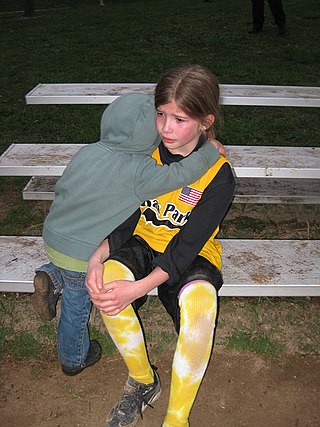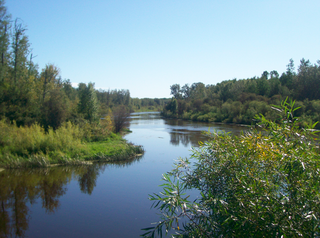
Speciesism is a term used in philosophy regarding the treatment of individuals of different species. The term has several different definitions within the relevant literature. Some sources specifically define speciesism as discrimination or unjustified treatment based on an individual's species membership, while other sources define it as differential treatment without regard to whether the treatment is justified or not. Richard Ryder, who coined the term, defined it as "a prejudice or attitude of bias in favour of the interests of members of one's own species and against those of members of other species." Speciesism results in the belief that humans have the right to use non-human animals, which scholars say is pervasive in the modern society. Studies from 2015 and 2019 suggest that people who support animal exploitation also tend to endorse racist, sexist, and other prejudicial views, which furthers the beliefs in human supremacy and group dominance to justify systems of inequality and oppression.

Nature conservation is the moral philosophy and conservation movement focused on protecting species from extinction, maintaining and restoring habitats, enhancing ecosystem services, and protecting biological diversity. A range of values underlie conservation, which can be guided by biocentrism, anthropocentrism, ecocentrism, and sentientism, environmental ideologies that inform ecocultural practices and identities. There has recently been a movement towards evidence-based conservation which calls for greater use of scientific evidence to improve the effectiveness of conservation efforts. As of 2018 15% of land and 7.3% of the oceans were protected. Many environmentalists set a target of protecting 30% of land and marine territory by 2030. In 2021, 16.64% of land and 7.9% of the oceans were protected. The 2022 IPCC report on climate impacts and adaptation, underlines the need to conserve 30% to 50% of the Earth's land, freshwater and ocean areas – echoing the 30% goal of the U.N.'s Convention on Biodiversity. Ultimately, these movements should be further promoted to encourage biodiversity and to conserve a functional ecosystem.
In the field of psychology, cognitive dissonance is the perception of contradictory information and the mental toll of it. Relevant items of information include a person's actions, feelings, ideas, beliefs, values, and things in the environment. Cognitive dissonance is typically experienced as psychological stress when persons participate in an action that goes against one or more of those things. According to this theory, when two actions or ideas are not psychologically consistent with each other, people do all in their power to change them until they become consistent. The discomfort is triggered by the person's belief clashing with new information perceived, wherein the individual tries to find a way to resolve the contradiction to reduce their discomfort.
Anthropocentrism is the belief that human beings are the central or most important entity in the universe. The term can be used interchangeably with humanocentrism, and some refer to the concept as human supremacy or human exceptionalism. From an anthropocentric perspective, humankind is seen as separate from nature and superior to it, and other entities are viewed as resources for humans to use. Eating Animals, a novel written by Jonathan Foer, describes anthropocentrism as "The conviction that humans are the pinnacle of evolution, the appropriate yardstick by which to measure the lives of other animals, and the rightful owners of everything that lives." This quote exemplifies the deeper meaning behind his novel: how human beings are overtaking the animal industry, which is being overshadowed by financial and personal gain. Human instincts, such as anthropocentrism, have refined the meat industry to many inhumane and unethical practices. Human projection onto animals tend to be unethical. This is because humans see themselves as superior over animals, which can be used as an example of anthropocentrism.

Empathy is generally described as the ability to take on another's perspective, to understand, feel and possibly share and respond to their experience. There are more definitions of empathy that include but is not limited to social, cognitive, and emotional processes primarily concerned with understanding others. Often times, empathy is considered to be a broad term, and broken down into more specific concepts and types that include cognitive empathy, emotional empathy, somatic empathy, and spiritual empathy.
Applied psychology is the use of psychological methods and findings of scientific psychology to solve practical problems of human and animal behavior and experience. Educational and organizational psychology, business management, law, health, product design, ergonomics, behavioural psychology, psychology of motivation, psychoanalysis, neuropsychology, psychiatry and mental health are just a few of the areas that have been influenced by the application of psychological principles and scientific findings. Some of the areas of applied psychology include counseling psychology, industrial and organizational psychology, engineering psychology, occupational health psychology, legal psychology, school psychology, sports psychology, community psychology, neuropsychology, medical psychology and clinical psychology, evolutionary psychology, human factors, forensic psychology and traffic psychology. In addition, a number of specialized areas in the general area of psychology have applied branches. However, the lines between sub-branch specializations and major applied psychology categories are often mixed or in some cases blurred. For example, a human factors psychologist might use a cognitive psychology theory. This could be described as human factor psychology or as applied cognitive psychology. When applied psychology is used in the treatment of behavioral disorders there are many experimental approaches to try and treat an individual. This type of psychology can be found in many of the subbranches in other fields of psychology.
Comparative psychology refers to the scientific study of the behavior and mental processes of non-human animals, especially as these relate to the phylogenetic history, adaptive significance, and development of behavior. The phrase comparative psychology may be employed in a narrow and a broad meaning. In its narrow meaning, it refers to the study of the similarities and differences in the psychology and behavior of different species. In a broader meaning, comparative psychology includes comparisons between different biological and socio-cultural groups, such as species, sexes, developmental stages, ages, and ethnicities. Research in this area addresses many different issues, uses many different methods and explores the behavior of many different species from insects to primates.

Human behavior is the potential and expressed capacity of human individuals or groups to respond to internal and external stimuli throughout their life. Behavior is driven by genetic and environmental factors that affect an individual. Behavior is also driven, in part, by thoughts and feelings, which provide insight into individual psyche, revealing such things as attitudes and values. Human behavior is shaped by psychological traits, as personality types vary from person to person, producing different actions and behavior.
Sex differences in psychology are differences in the mental functions and behaviors of the sexes and are due to a complex interplay of biological, developmental, and cultural factors. Differences have been found in a variety of fields such as mental health, cognitive abilities, personality, emotion, sexuality, and tendency towards aggression. Such variation may be innate, learned, or both. Modern research attempts to distinguish between these causes and to analyze any ethical concerns raised. Since behavior is a result of interactions between nature and nurture, researchers are interested in investigating how biology and environment interact to produce such differences, although this is often not possible.
Environmental psychology is a branch of psychology that explores the relationship between humans and the external world. It examines the way in which the natural environment and our built environments shape us as individuals. Environmental psychology emphasizes how humans change the environment and how the environment changes humans' experiences and behaviors. The field defines the term environment broadly, encompassing natural environments, social settings, built environments, learning environments, and informational environments. According to an article on APA Psychnet, environmental psychology is when a person thinks of a plan, travels to a certain place, and follows through with the plan throughout their behavior.
Social dominance orientation (SDO) is a personality trait measuring an individual's support for social hierarchy and the extent to which they desire their in-group be superior to out-groups. SDO is conceptualized under social dominance theory as a measure of individual differences in levels of group-based discrimination; that is, it is a measure of an individual's preference for hierarchy within any social system and the domination over lower-status groups. It is a predisposition toward anti-egalitarianism within and between groups.
Cultural psychology is the study of how cultures reflect and shape their members' psychological processes.

Humane education is broadly defined as education that nurtures compassion and respect for living beings In addition to focusing on the humane treatment of non-human animals, humane education also increasingly contains content related to the environment, the compassionate treatment of other people, and the interconnectedness of issues pertaining to people and the planet. Humane education encourages cognitive, affective, and behavioral growth through personal development of critical thinking, problem solving, perspective-taking, and empathy as it relates to people, animals, the planet, and the intersections among them. Education taught through the lens of humane pedagogy supports more than knowledge acquisition, it allows learners to process personal values and choose prosocial behaviors aligned with those values.
The connectedness to nature scale (CNS) is a measure of individuals' trait levels of feeling emotionally connected to the natural world in the realm of social and environmental psychology. The CNS was “designed to tap an individual’s affective, experiential connection to nature.” The concept of connectedness to nature signifies the relationship between an individual and the environment. In brief, the scale intends to measure the level to which an individual feels connected with the natural world. Mayer and Frantz describe the CNS as a reliable, single-factored, multi-item scale that is easy to administer.
Moral disengagement is a meaning from social psychology and Educational Psychology for the process of convincing the self that ethical standards do not apply to oneself in a particular context. This is done by separating moral reactions from inhumane conduct and disabling the mechanism of self-condemnation. Thus, moral disengagement involves a process of cognitive re-construing or re-framing of destructive behavior as being morally acceptable without changing the behavior or the moral standards.
Conservation psychology is the scientific study of the reciprocal relationships between humans and the rest of nature, with a particular focus on how to encourage conservation of the natural world. Rather than a specialty area within psychology itself, it is a growing field for scientists, researchers, and practitioners of all disciplines to come together and better understand the Earth and what can be done to preserve it. This network seeks to understand why humans hurt or help the environment and what can be done to change such behavior. The term "conservation psychology" refers to any fields of psychology that have understandable knowledge about the environment and the effects humans have on the natural world. Conservation psychologists use their abilities in "greening" psychology and make society ecologically sustainable. The science of conservation psychology is oriented toward environmental sustainability, which includes concerns like the conservation of resources, conservation of ecosystems, and quality of life issues for humans and other species.

Nature connectedness is the extent to which individuals include nature as part of their identity. It includes an understanding of nature and everything it is made up of, even the parts that are not pleasing. Characteristics of nature connectedness are similar to those of a personality trait: nature connectedness is stable over time and across various situations.
The psychology of eating meat is an area of study seeking to illuminate the confluence of morality, emotions, cognition, and personality characteristics in the phenomenon of the consumption of meat. Research into the psychological and cultural factors of meat-eating suggests correlations with masculinity, support for hierarchical values, and reduced openness to experience. Because meat eating is widely practiced but is sometimes associated with ambivalence, it has been used as a case study in moral psychology to illustrate theories of cognitive dissonance and moral disengagement. Research into the consumer psychology of meat is relevant both to meat industry marketing and to advocates of reduced meat consumption.

In the field of personality psychology, Machiavellianism is a personality trait characterized by interpersonal manipulation, indifference to morality, lack of empathy, and a strategic focus on self-interest. Psychologists Richard Christie and Florence Geis named the trait after Niccolò Machiavelli, as they used edited and truncated statements inspired by his works to study variations in human behaviors. Their Mach IV test, a 20-question, Likert-scale personality survey, became the standard self-assessment tool and scale of the Machiavellianism construct. Those who score high on the scale are more likely to have a high level of deceitfulness and a cynical, unemotional temperament.

The Campbell paradigm is a behavioral theory from social psychology. The paradigm was developed by social psychologist Florian G. Kaiser and his colleagues in 2010, building on an earlier suggestion by Donald T. Campbell, after whom the paradigm is named. It offers an explanation for why and when individuals engage in particular behaviors. It is mainly applied to behaviors that are aimed at fighting climate change and protecting the environment.








